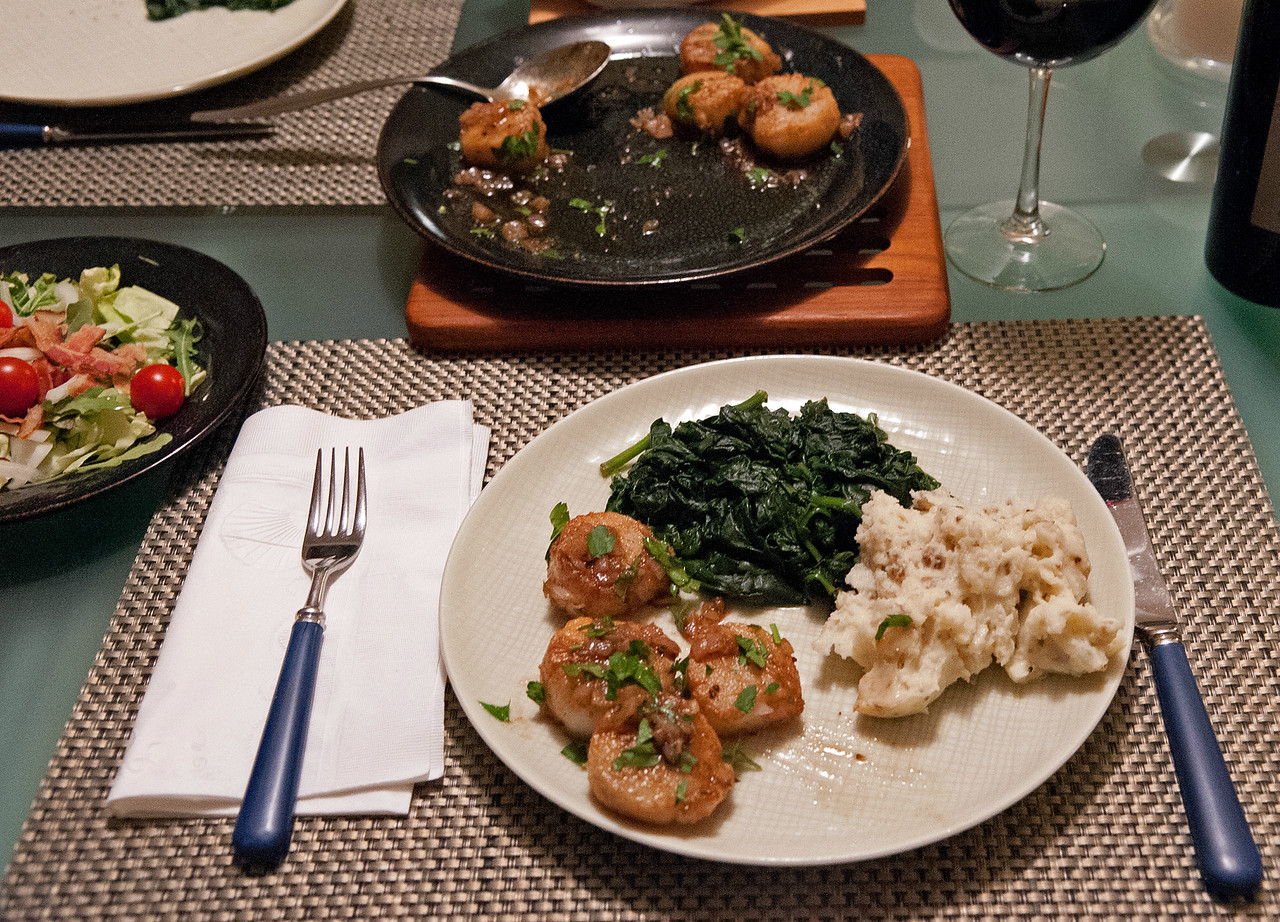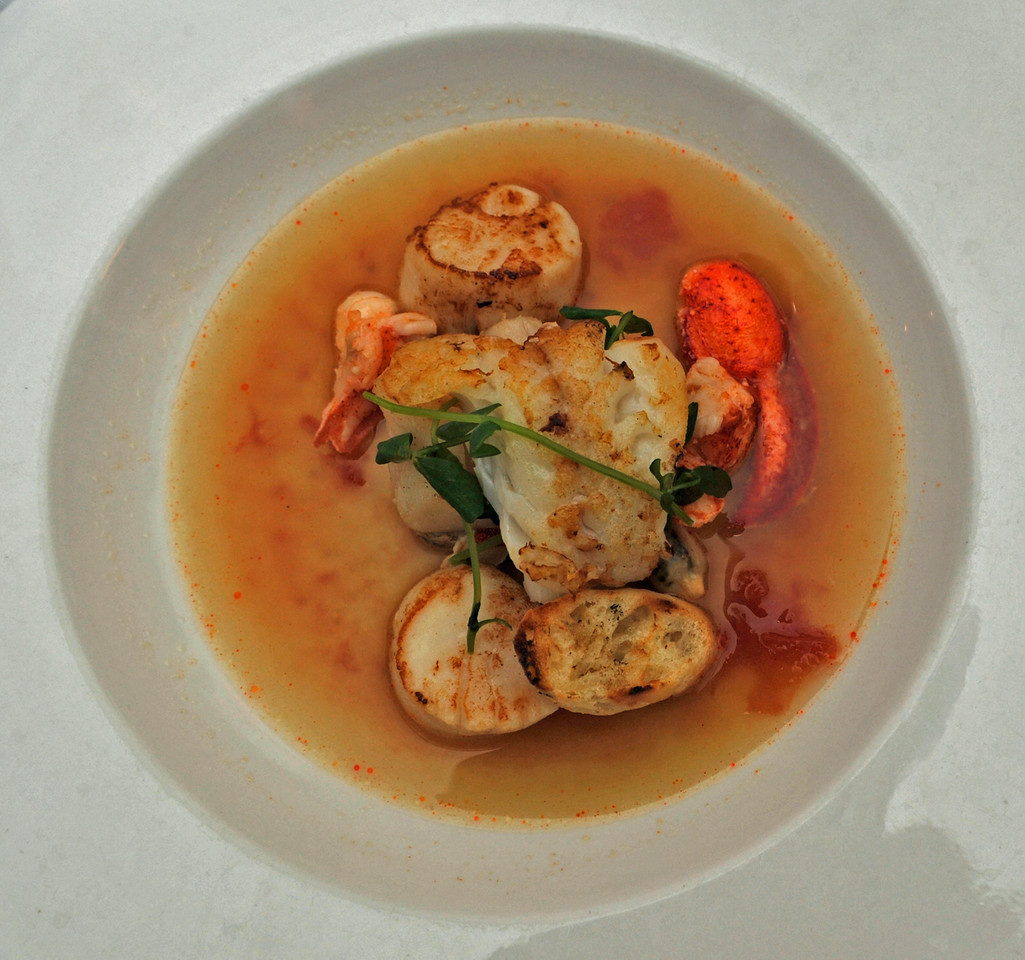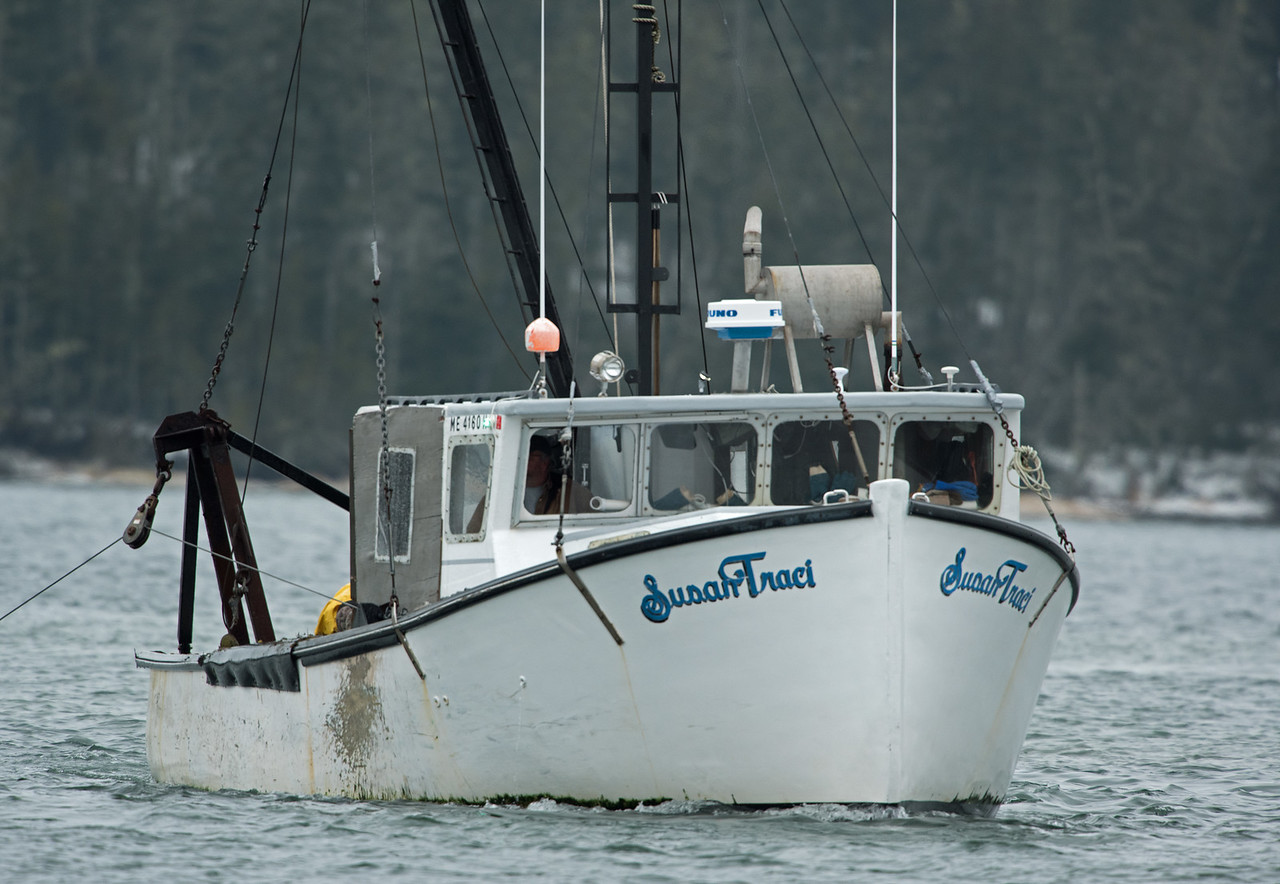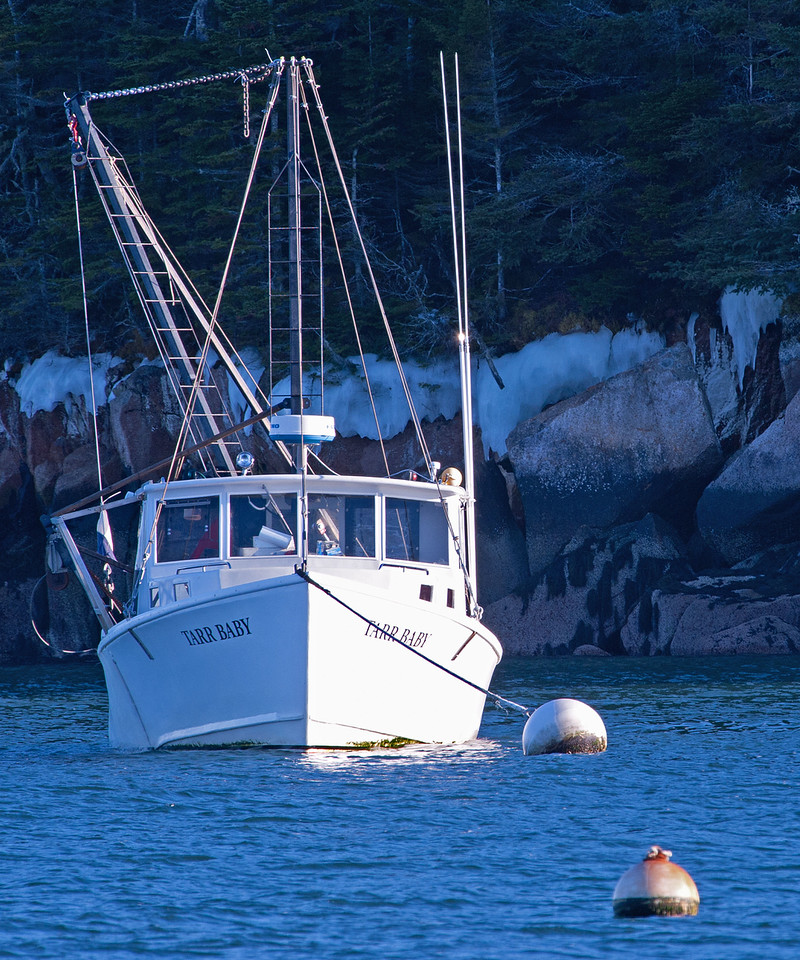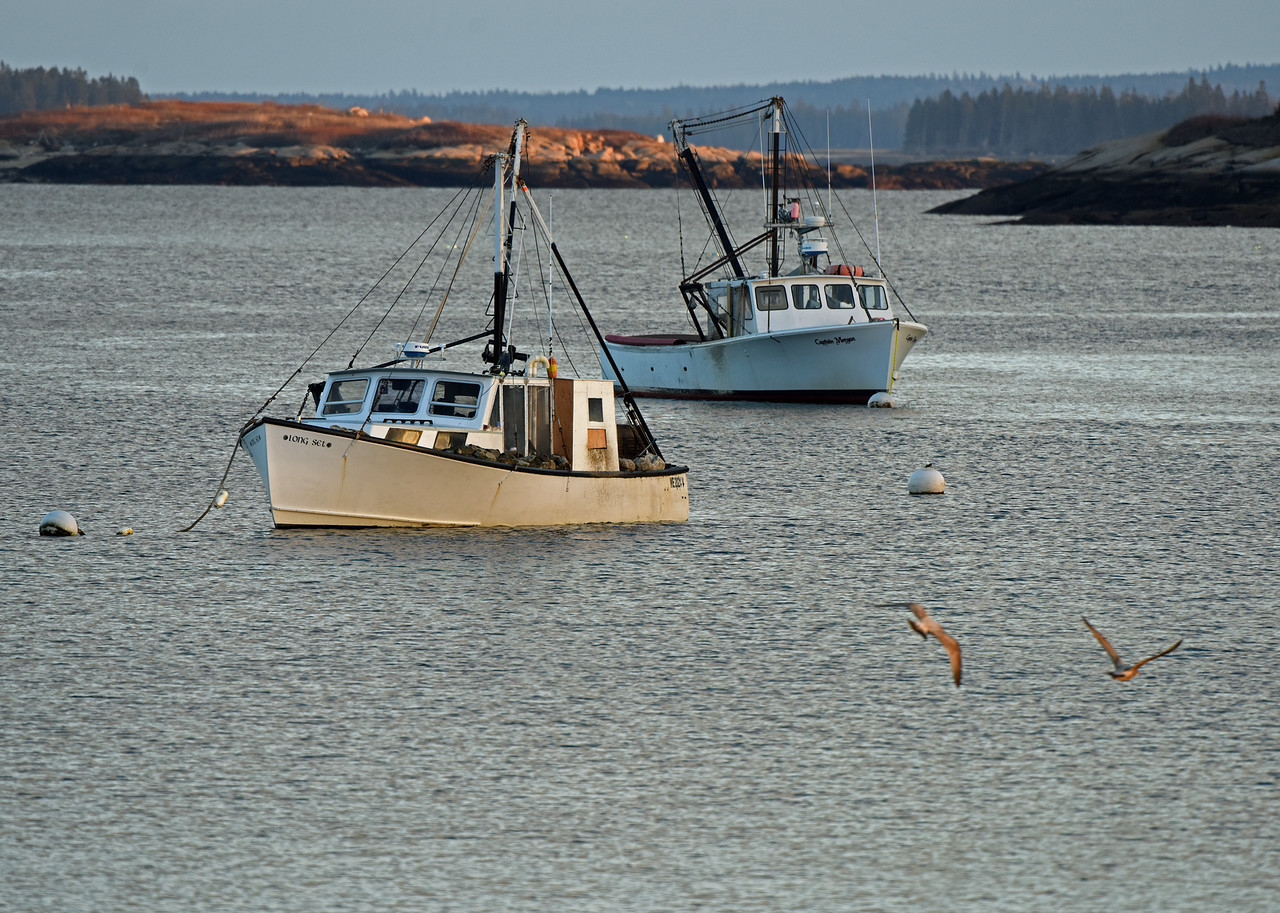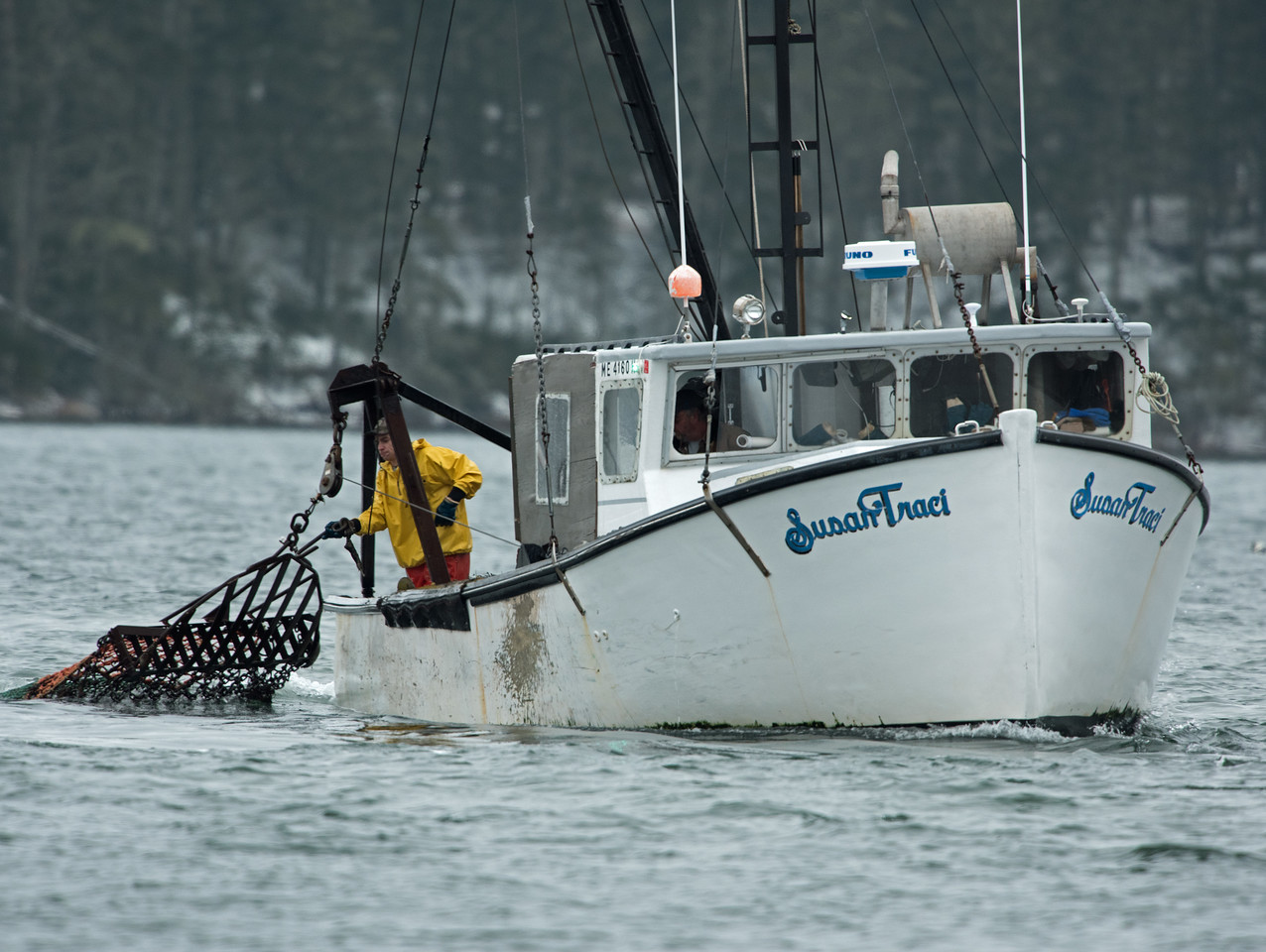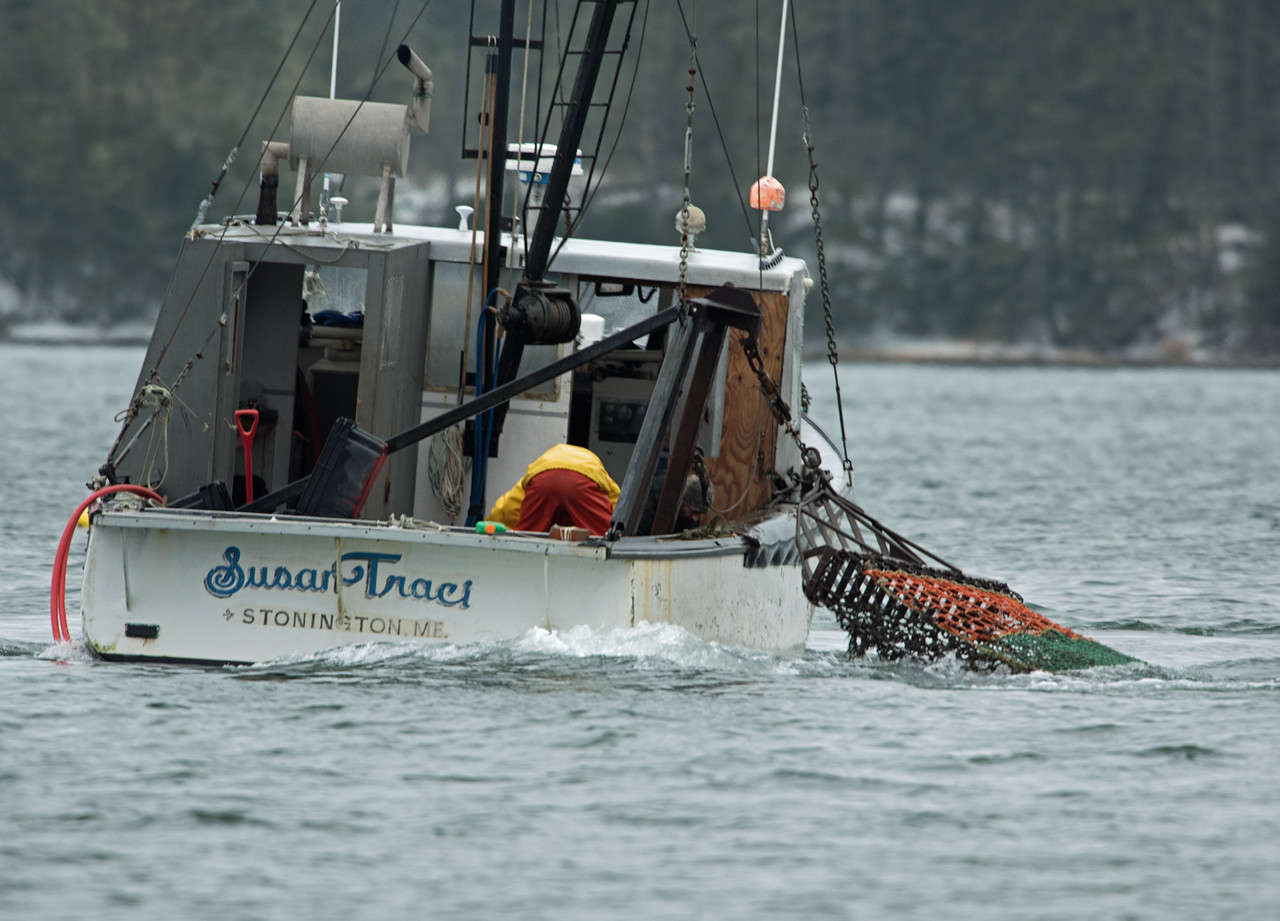In Brooklin, Maine
The Atlantic Sea Scallop is a strange creature. Among other things, it looks at its murky world through many eyes and swims by contracting its large muscle to open and close its shell. Few people have seen those eyes, but many know that muscle intimately. That "abductor muscle" is the part that we eat. It’s delicious, whether served simply seared or as part of a "Maine Bouillabaisse" with other locally-caught seafood.
Sea Scallops also are considered by many people to be expensive, especially when sold in a place that is not near a good source. Today’s on-line retail price from New York’s Fulton Fish Market is $35.00 per pound; our supermarket in Blue Hill has been selling them for $21.99 per pound. But, scallops aren't picked from trees in the summer; they're ripped from the sea bottom, usually in the winter. (The Maine scallop season is December through part of April.)
Then, there is the matter of the specially-equipped boat. Around here, it’s usually a lobster boat fitted with a a powerful winch and steel mast and boom for scalloping. Other than that standard equipment, the boats come in an interesting variety of forms.
There’s also the complicated gear, especially the scallop dredge. It's attached to the boom by wire and dragged across the sea floor where the mollusks are suspected to be. Around here, the so-called New Bedford style dredge seems to be preferred.
Among many other parts, the dredge has, at its forward end, a heavy steel, triangularly-shaped frame from which a “net” or “bag” made of steel rings hangs. Maine scalloping regulations require the rings to have a certain minimum diameter to allow small scallops and other non-targeted “bycatch” to escape. The diameters and other openings are varied from time to time by state regulations, depending on current concerns.
On the dredge’s top when dragged, the regulations require a twine or rope mesh with certain-sized openings to allow finned fish to escape. When the dredge is winched in and up, the scallops (and usually some detritus) are at the bottom of the bag, which can be emptied through an opening. The scallops are shucked on board.
Not all sea scallops are dredged. About one percent are harvested by courageous (some might say crazy) SCUBA divers in wet suits, who dive into our cold and dark waters and hand pick the mollusks. These are the really expensive “diver scallops” – and, the most delicious when eaten soon after being caught. Some scallop fisherman both dredge and dive; their boats often have diving platforms attached to the transoms.
The latest state data estimate that 276,474,805 pounds of shelled sea scallops were landed in Maine during the 2015-2016 season, about 33 million less than the prior season. However, National Oceanic and Atmospheric Administration data indicate that the mollusks are not endangered. We're not sure we can say that about our fishermen.
For larger versions of the above images, as well as a few additional images of scallop fishing, click on the link below. (We recommend that your initial viewing be in full-screen mode, which can be achieved by clicking on the Slideshow [>] icon above the featured image in the gallery to which the link will take you.) Here’s the link:
Cheers,
Barbara and Dick

